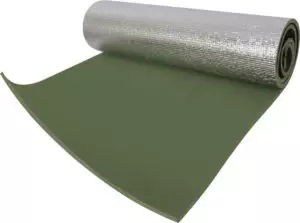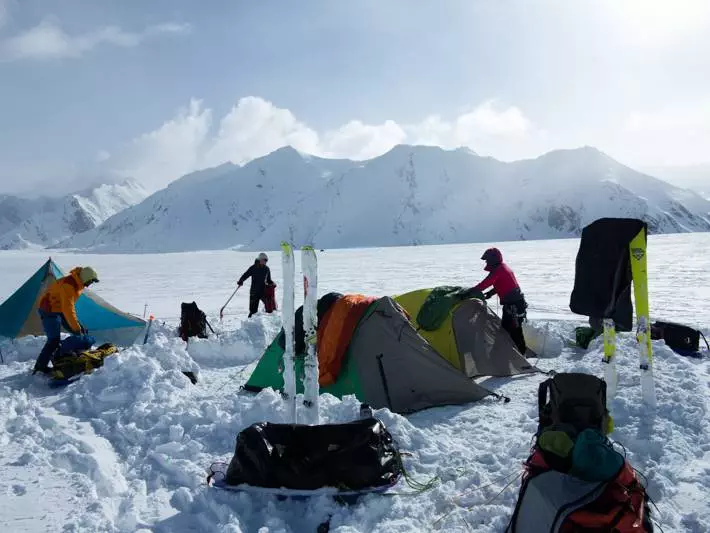When camping in the mountains, your greatest enemy is the cold. Ambient air temperature affects your comfort during the day, but when sleeping at night it’s the ground that will sap your body’s warmth. We can guard against the cold with effective base layer clothing and insulated sleeping bags, but for a good night’s sleep you’ll need something between you and the ground (besides a thin tent floor). That means choosing the right sleeping pad for camping in the mountains, both for warmth and for comfort.
Sleeping Pad Options
Like most camping equipment, sleeping pads come in a price range from as little as $20 for a closed-cell foamie to more than $300 for an ultra-insulated, ultra-comfortable car camping air mattress. Most campers will end up somewhere in the middle.

Closed-cell foam sleeping pads are the most basic, affordable and durable sleeping pads out there. They consist of dense foam with tiny closed air cells for insulation. They are not the most comfortable night’s sleep, but if you want to save weight and don’t mind resting on a harder surface, then a foamie will do the trick. They can also be carried on the outside of your pack in the elements without issue.
Pros: Inexpensive, rugged, lightweight
Cons: Uncomfortable, bulky, not enough insulation for winter camping

Self-Inflating sleeping pads consist of open cell foam sandwiched between two layers of fabric. When the pad is rolled out with the valve open, it will self-inflate as the foam expands and can be topped up with your own breath. The packed volume, however, can be quite bulky depending on the model.
Pros: More supportive than closed-cell foam, excellent insulation, durable
Cons: Heavy, can be bulky

Air sleeping pads are the most practical for mountain travel. They are the most comfortable, the most packable and some models come with synthetic or down fill for extra insulation. Air pads are susceptible to punctures but can be easily repaired (never enter the field without a patch kit). Depending on the fill and the build, air pads come in the widest price range.
Pros: Lightweight, comfortable, packable
Cons: Requires inflation, not as durable, less stable sleeping surface
Understanding R-Values
When shopping for a sleeping pad, you may notice that all pads have (or should have) an R-Value, which is a measure of thermal resistance. The higher the R-Value, the less heat will flow from your body to the ground. For example, a closed cell, 1cm-thick foamie will have an R-Value of approximately 1.4, whereas a down-filled air sleeping pad can have an R-Value as high as 8.0. R-Values are usually (though not always) proportional to the cost of the pad.
Choosing the right sleeping pad for you
Just like we mentioned in our previous post Guide to Camping in the Mountains: Sleeping Bags, everyone has different tolerances to comfort and cold. If you intend on frequently heading into remote locations to camp, a quality air pad is worth the investment. When camping on the ground, always take care of your pad by guarding against sharp objects and be mindful if your dog sleeps in the tent with you. Winter expeditioners will often pack an air pad and a closed cell foamie for extra insulation when sleeping. The foamie also makes a great seat when cooking/eating and can serve as a backup if your air pad punctures or fails.
While many people will look to the coziness of a sleeping bag to keep them warm in the mountains, sleeping pads can be just as much of a factor in a good night’s sleep.


